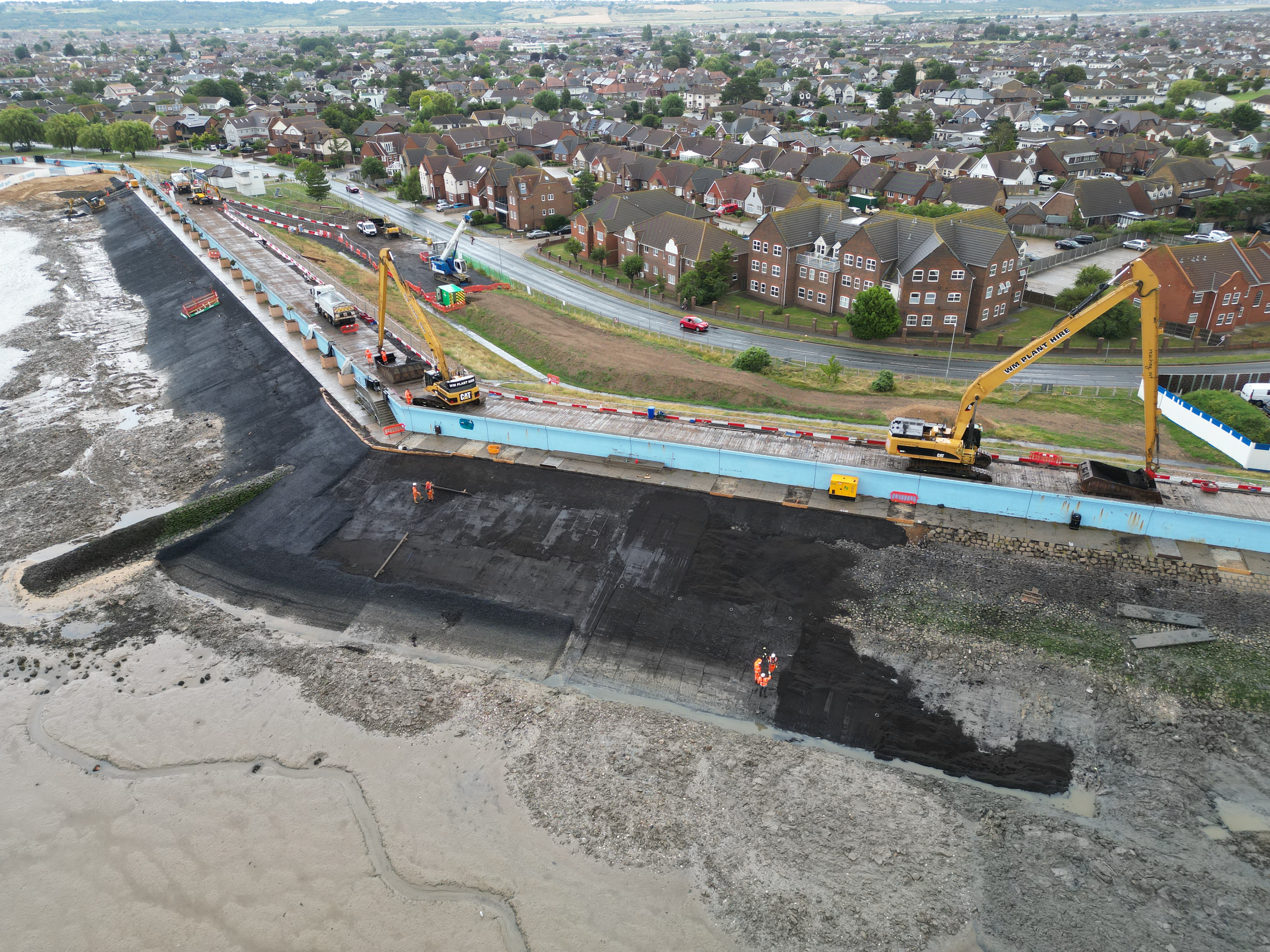Working collaboratively as an integrated delivery team with the Environment Agency and Jacobs, we’re undertaking a 10-year programme to refurbish and replace tidal flood defences in London and the Thames Estuary.
TEAM2100 was set up by the Environment Agency to create a long-term approach to adapting and managing tidal flood defences in London and the Thames Estuary, including the iconic Thames Barrier. The 10-year capital investment programme, designed to ensure the future security of the estuary, is the largest single flood risk management programme of its kind on an estuary in the UK.
Ensuring climate resilience for generations to come
Many of the existing defences are 30-years old, in some cases some over 100-years old. With an estimated 20-88 centimeters1 rise in sea level due to climate change predicted over the next century, resilient tidal flood defences are essential to protect approximately 1.4 million people, wildlife, and £321 billion worth of property in London, Essex and Kent from the risk of tidal flooding.
Through an extensive flood management and climate resilience program, Team2100 will carry out planning, inspection, improvement, and refurbishment of a variety of flood defences consisting of 330-kilometers of walls and embankments and over 400 structures including flood gates, outfalls, and pumps.
people protected by the tidal defences
single flood risk management programme of its kind on an estuary in the UK
of the first UK coastal and flood protection scheme in the UK to use hydrogen powered vehicles
Right place, right time
Using a programmatic approach to managing the defences, Team2100 will ensure that investment and improvements in the defences are implemented in the right places at the right time. This approach reduces overall costs and delivers greater benefit and value for money for local communities and the economy.
Canvey Island
One area in the Anglian region to receive this investment and benefit from improvements is Canvey Island in Essex. Much of Canvey Island lies below the daily high-water level in the Thames Estuary so tidal defences play a critical role in reducing the risk of flooding to people, property and infrastructure.
Sections of the existing 3.2km southern shoreline revetment that is being replaced at Canvey Island dates back to the 1930s. As well as the refurbishment of the existing tidal defences, between Thorney Bay and the Island Yacht Club, we’re also making improvements to public access along the seaward walkway and installing new steps to the beach and foreshore.

Our team at Canvey Island have made it their mission to ensure that their work leaves a lasting positive legacy. Supporting our sustainability ambitions, the team have implemented and led the way on a wide range of innovative environment and sustainability initiatives including:
Beyond Net Zero Carbon
- Championing and securing customer funding for the introduction of hydrogen powered plant and equipment from 2024 onwards
- Use of asphalt to reduce carbon when creating new revetment
- Use of cemfree concrete for in-situ and precast concrete reducing embodied carbon by 85% versus traditional (CEMI) concrete
- Use of basalt rebar rather than traditional steel reducing embodied carbon by approx. 60% compared to using steel
- Use of solar and wind energy to power the compounds
- Rainwater harvesting for flushing toilets, wheel washing and boot washing
- Managing our impact on the environment by planting flowering grass seed mixes, creating bug hotels and installing precast concrete rock pools and habitats in the inter-tidal environment to encourage biodiversity.
Positively Impact More than 1 Million People
- Provision of work opportunities for 20 local people
- Employment of four apprentices on the scheme in quantity surveying, engineering and sustainability roles
- STEM ambassadors working with local schools
- Supporting local community groups with donations of materials, fundraising and volunteering activities
- Ensuring we procure goods and services from local businesses including a local sandwich van, locally sourced milk and fresh fruit
- Introduction of innovative breathing apparatus for employees who are neurodiverse or wear religious headwear
- Use of RoboEvo to clear vegetation, cut grass and remove seaweed from the revetment which is uneven and slippery – improving the health and safety of our employees